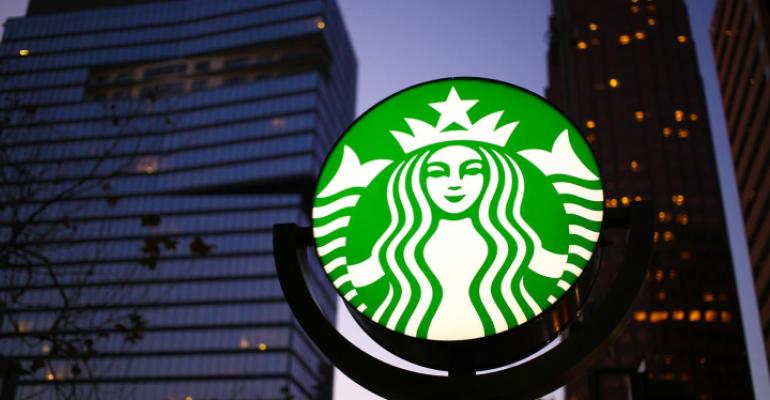Starbucks reported a same-store sales decline for the second quarter of 2024, for the first time in almost three years since the peak of the pandemic, as shares of the Seattle-based coffee chain plummeted 16% over the past day. According to CEO Laxman Narasimhan, the global same-store sales drop of 4% was driven by declining traffic in North America, issues in China and the Middle East, bad weather, and “a more cautious consumer overall.” Additionally, Starbucks revised its annual fiscal guidance to reflect a more reserved growth outlook as the company attempts to reverse this negative sales trend.
“Our performance this quarter was disappointing and did not meet our expectations,” Narasimhan said during Tuesday’s Q2 earnings call. “In this environment, many customers are being more exacting about where and how they choose to spend their money, particularly with stimulus savings mostly spent. We saw this materialize over the quarter as customers made the trade-offs between food away from home and food at home.”
Traffic issues were particularly reflected by declines in occasional customer visits, as people who do not make Starbucks visits a daily habit were choosing to save money this past quarter, Starbucks executive vice president and chief financial officer Rachel Ruggeri said Tuesday. This was partially offset by bumps in customer visits driven by new products like the lavender matcha latte, as well as continued growth of cold beverages mix.
“If you take some of these transitory headwinds out, and you look at the underlying headwinds, particularly around the pressures that consumers face, particularly with the occasional customer, what we're seeing is that's where the challenge is,” Narasimhan said.
“It's a challenge with their traffic, and it's a challenge with them coming into our stores. If you look at our most loyal customers, they're coming in often, they're seeing the value that we provide in Starbucks rewards in our app.”
Besides reaching these occasional guests, Starbucks leadership emphasized that many of the issues over the past quarter came down to challenges with meeting demand, particularly during peak morning hours. For example, when Starbucks rewards members use mobile order and pay, they will oftentimes leave an incomplete order in their shopping cart, “citing long wait times and product unavailability.” This could be connected to the Starbucks Rewards membership numbers, which analyst Andrew Charles with TD Cowen pointed out decreased from Q1 to Q2, despite annual growth, which is the first time this has happened since Starbucks began tracking rewards program membership in 2013.
In order to meet consumers’ rising expectations, Narasimhan said that the company is continuing to roll out new equipment and labor efficiency solutions like the siren craft system, and have extended the company’s promised investment in store efficiencies from $3 billion to $4 billion.
Besides meeting demand, Starbucks will also be introducing new digital marketing strategies to turn the tide of traffic declines and turn the occasional customer into the regular customer. One of the biggest changes coming soon will be opening up the Starbucks app to everyone beginning in July, not just rewards members, so that customers of all types can take advantage of mobile order and pay.
Starbucks will also be offering new app-exclusive offers starting in May — “offers that are timely and relevant and flexible to location, inventory availability and weather — creating additional incentive for customers to return to the company more often.
“We also plan to invest $600 million over the next three years to further digitize our stores and better target customers in more personalized ways,” Narasimhan said. “This includes the installation of digital menu boards across the footprint of all our company stores in the U.S. and China.”
Additionally, Starbucks plans to roll out more new products to keep consumer interest alive, starting with pearls—a “texture-based innovation” and beverage-add-on that is likely in line with the growing trend of boba (and popping boba pearls) throughout the country. The company is also going to be offering low-calorie energy drinks and sugar-free customization options, which echo the need for healthier options (particularly with younger generations), and almost seem to imitate the product innovations pushed by Starbucks’ competitors like Dunkin’ and Dutch Bros.
Starbucks’ net revenues were down 2% in Q2 to $8.6 billion. The company’s net income for Q2 decreased 15% from $908 million or $0.79 per share to $772.4 million or $0.68 per share. The company opened 364 net new stores in Q2, ending the quarter with 38,951 stores globally.
Contact Joanna Fantozzi at [email protected]




